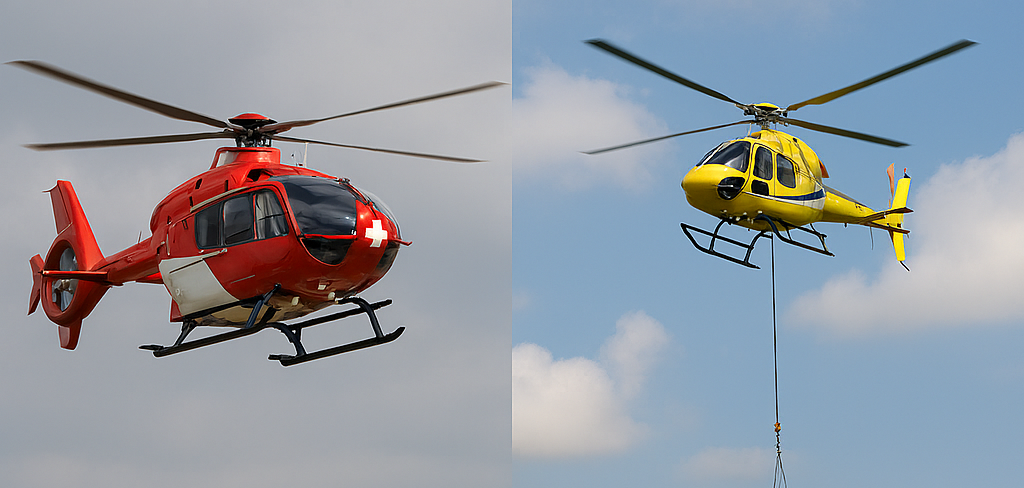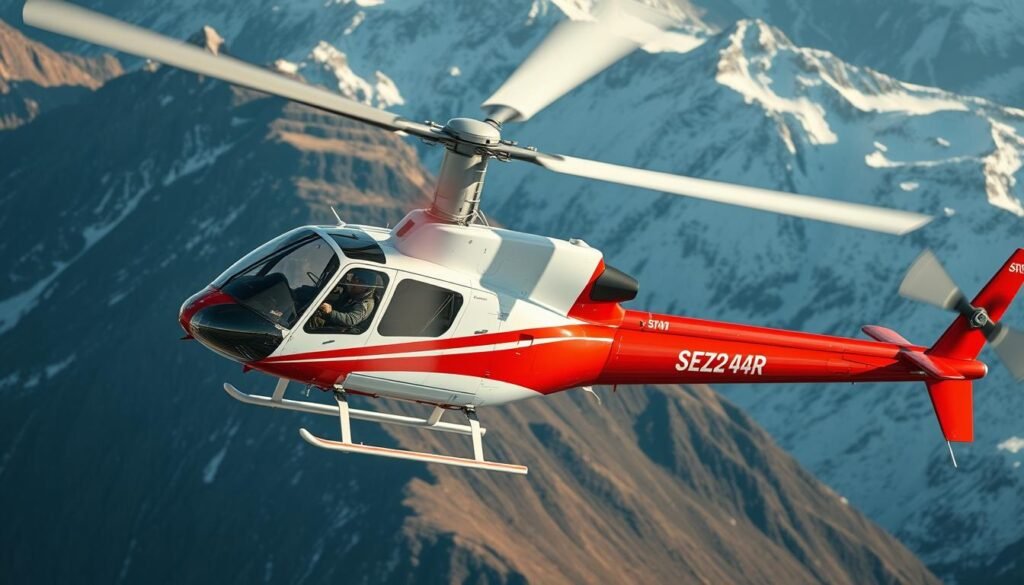Helicopter pilots have a wide range of career options, each with its own rhythm, rewards, and challenges. Whether you’re drawn to the urgency of emergency medical services (EMS), the precision of utility operations, or the polish of VIP transport, your choice will shape not just your paycheck — but your lifestyle, daily stress levels, and long-term growth opportunities.
Choosing the right path isn’t just about flying; it’s about finding alignment between your personality, values, and professional goals. Some pilots thrive in unpredictable, high-stakes missions. Others prefer structured schedules and client-facing roles. Understanding these differences early can help you avoid burnout and build a career that’s both sustainable and fulfilling.
That’s where Helicopted.com comes in. We’re more than a content hub — we’re your co-pilot in career planning. From salary breakdowns and training comparisons to real-world pilot profiles and resume tips, our tools and guides are designed to help you make informed decisions with confidence. Whether you’re just starting out or pivoting mid-career, we’re here to help you chart your course.
🚑 EMS: Emergency Medical Services
Mission Profile:
EMS pilots are the lifeline between accident scenes and hospitals. They transport medical crews and patients, often in high-pressure, time-sensitive situations. Flights may occur in poor weather, at night, or in remote terrain — requiring sharp decision-making and technical proficiency.
Real-World Snapshot:
Jake, an EMS pilot in Colorado, flies night shifts across mountainous terrain. His IFR training and calm demeanor are critical during snowstorms and trauma calls. “You’re not just flying — you’re part of a team saving lives,” he says.
Pros:
- High-impact work that saves lives
- Strong demand in rural and underserved areas
- Often includes housing, per diem, and benefits
Cons:
- Irregular hours and night flying
- High-stress environments
- Weather and terrain challenges
Typical Requirements:
- 1,500+ flight hours
- Instrument rating (IFR proficiency)
- CRM (Crew Resource Management) training
Common Aircraft:
- Bell 407
- Airbus H135
- EC145
Geographic Hotspots:
- Colorado, Montana, Appalachia
- Remote regions with limited hospital access
Career Progression:
- Lead EMS pilot
- Flight operations manager
- Instructor roles in IFR or CRM training
🚁 Career Progression
🏥 EMS Pilots
Emergency Medical Services (EMS) pilots often begin their careers after logging significant hours in general aviation or instructional roles. Once hired, they typically fly single-pilot IFR missions, often at night or in challenging weather. With experience, EMS pilots may transition into Search and Rescue (SAR) or law enforcement aviation, where similar skills — precision flying, quick decision-making, and mission coordination — are highly valued. Advancement may also include becoming a base manager or check airman, roles that require leadership and additional certifications like ATP (Airline Transport Pilot) or NVG (Night Vision Goggle) endorsements.
⚡ Utility Pilots
Utility pilots start with strong foundational skills in external load operations, often gained through agricultural flying or logging support. As they build hours and master long-line techniques, many move into aerial firefighting, where their precision and mountain flying experience are critical. Others pivot toward survey work, powerline patrol, or construction lift support. Career growth may involve earning Class A CDL for ground coordination, or specialized training in confined-area landings and high-altitude operations. Senior utility pilots often become mentors or transition into training roles for new hires entering high-risk environments.
💼 VIP Transport Pilots
VIP pilots typically enter the field with turbine experience and a polished customer-service mindset. Many come from corporate aviation or charter backgrounds, and the role demands discretion, punctuality, and smooth flying. With time, VIP pilots may transition into corporate jet operations, especially if they hold dual ratings (helicopter and fixed-wing). Others move into fleet management, overseeing multiple aircraft and coordinating logistics for high-net-worth clients. Advancement often hinges on earning an ATP certificate, maintaining impeccable safety records, and building trust with elite clientele.
⚡ Utility: Infrastructure & External Load Operations
Mission Profile:
Utility pilots support infrastructure projects — inspecting powerlines, surveying pipelines, fighting wildfires, and hauling external loads. These roles demand technical flying skills, precision, and comfort with remote, rugged conditions.
Real-World Snapshot:
Tasha flies utility contracts in Alaska, hauling gear to remote sites using long-line techniques. Her days start early, often in sub-zero temperatures, and end with a sense of accomplishment few jobs can match.
Pros:
- Hands-on flying with varied missions
- High demand in energy and infrastructure sectors
- Opportunities for long-term contracts
Cons:
- Physically demanding and often remote
- Exposure to weather extremes
- May require relocation or seasonal work
Typical Requirements:
- 2,000+ flight hours
- Long-line certification
- Mountain/off-airport flying experience
Common Aircraft:
- MD 500
- Bell 206L
- AS350
Geographic Hotspots:
- Alaska, Texas, Pacific Northwest
- Areas with active energy corridors or wildfire risk
Career Progression:
- Aerial firefighting
- Contract coordination
- Utility flight training and certification roles
🛩️ VIP: Executive & Private Transport
Mission Profile:
VIP pilots fly high-net-worth individuals, celebrities, and executives. The role emphasizes discretion, professionalism, and smooth flying experiences. It’s less about technical flying and more about delivering luxury and reliability.
Real-World Snapshot:
Marcus flies a twin-engine helicopter between Manhattan and the Hamptons. His day includes preflight briefings, coordinating with security teams, and ensuring a seamless experience for his clients. “You’re part pilot, part concierge,” he jokes.
Pros:
- High earning potential
- Luxurious aircraft and facilities
- Predictable schedules (in some cases)
Cons:
- High expectations and performance pressure
- Limited openings
- Requires impeccable grooming and etiquette
Typical Requirements:
- 1,500–2,000+ flight hours
- Exceptional customer service skills
- Clean safety and performance record
Common Aircraft:
- Sikorsky S-76
- Airbus H145
- Bell 429
Geographic Hotspots:
- Florida, California, Northeast Corridor
- Metro areas with private helipads and seasonal travel demand
Career Progression:
- Chief pilot for private fleet
- Corporate aviation transition
- Luxury charter operations
💰 Helicopter Pilot Salary Comparison
| Career Path | Entry-Level Salary | Experienced Salary | Top-End Potential |
|---|---|---|---|
| EMS | $60K–$75K | $80K–$100K | $110K+ |
| Utility | $70K–$90K | $100K–$130K | $150K+ |
| VIP | $80K–$100K | $120K–$160K | $200K+ |
Note: Salaries vary by region, aircraft type, and employer. Contract pilots may earn more during peak seasons.
🎓 Training & Certifications: What It Takes to Fly Each Path
Becoming a helicopter pilot isn’t just about logging hours — it’s about earning the right credentials for the missions you want to fly. Each career path has its own training demands, from foundational licenses to specialized endorsements that unlock higher-paying or more complex roles.
Whether you’re aiming for EMS flights in low-visibility conditions, utility work with long-line precision, or VIP transport in multi-engine aircraft, your certification journey will shape your opportunities. This chart breaks down the typical training milestones for each path, including required licenses, preferred ratings, and additional qualifications that can give you a competitive edge.
Use it to map your next steps, compare timelines, and understand what employers are really looking for.
| Path | Key Certifications | Specialized Skills |
|---|---|---|
| EMS | IFR, CRM | Night flying, terrain awareness |
| Utility | Long-line, mountain ops | External load handling, precision flying |
| VIP | Customer service, security clearance | Smooth handling, discretion |
🧳 Lifestyle & Work-Life Balance: What to Expect Beyond the Cockpit
Flying helicopters isn’t just a job — it’s a lifestyle. From unpredictable callouts to luxury travel itineraries, each career path comes with its own rhythm, stress levels, and downtime. Understanding these differences can help you choose a role that fits not just your skills, but your personality and life goals.
This chart breaks down the day-to-day realities of EMS, Utility, and VIP pilots — including schedule flexibility, time off, emotional demands, and family impact. Whether you’re seeking adrenaline-fueled missions or a more predictable routine, use this comparison to find the balance that works for you.
| Factor | EMS | Utility | VIP |
|---|---|---|---|
| Schedule | Rotating shifts, 24/7 | Seasonal or contract-based | Often fixed or on-call |
| Environment | Hospitals, helipads | Remote sites, outdoors | Airports, private pads |
| Personal Impact | Emotionally intense | Physically demanding | High polish, low privacy |
🧭 Which Path Fits You?
Here’s a quick decision guide:
- Do you thrive under pressure and want to save lives? → EMS
- Love technical flying and outdoor work? → Utility
- Prefer polished environments and high-end clientele? → VIP
Still unsure? Consider shadowing pilots, attending industry expos, or exploring training programs that offer exposure to multiple sectors.
🔗 Related Articles to Explore
✈️ Final Thoughts: Charting Your Flight Path
Choosing a helicopter career isn’t just about picking a job — it’s about designing a life. Whether you’re drawn to the urgency of EMS missions, the grit of utility work, or the refinement of VIP transport, each path offers its own rhythm, rewards, and long-term potential. The key is knowing yourself: your tolerance for unpredictability, your appetite for technical challenge, and your vision for what flying means to you.
As you build hours, earn certifications, and explore new roles, remember that your career can evolve. Many pilots start in one sector and pivot as their skills, interests, or life circumstances change. That flexibility is one of the greatest strengths of rotorcraft aviation — and Helicopted.com is here to help you navigate it.
From training comparisons and salary breakdowns to resume tips and school directories, we’re building a resource hub designed for aspiring and active helicopter pilots who want more than just surface-level advice. Bookmark us, explore our career clusters, and check back often — because your journey deserves a co-pilot who’s just as committed to your growth as you are.
Ready to take the next step? Start by comparing training programs, exploring job boards, or diving into our guide on how to build flight hours. Your cockpit awaits.



